Melco E100A H80 8TB audiophile USB Drive

Review sample provided by Dimex
Retail price in the EU: € 1,999 (only available in black)
Sharing the N100 series’ half-width chassis, the Melco E100A audiophile hard disk drive offers an extra 8 TB of audio-grade storage for all audio systems relying on HDD storage. Naturally, this includes Melco Digital Music Libraries, as well as systems running Windows 11, MacOS, exFAT-compatible Linux-based equipment, and the Raspberry Pi. As such, it can expand the storage of Melco servers, Windows PCs, MacOS computers, and a range of servers and streamers from other brands.
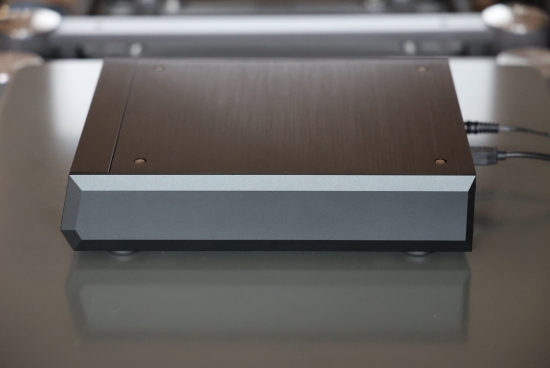
Power is supplied by a 12 V DC external power brick (48 W AC switching adapter). Naturally, the unit can also be powered by a higher-specification power supply with the same DC voltage and polarity.
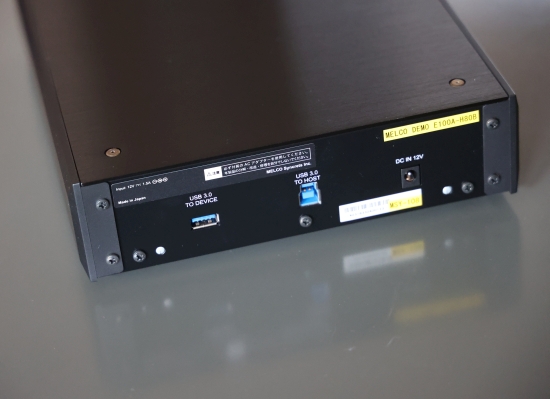
Connection to the server or streamer is done via USB 3.0 Type B to the host. A USB 3.0 USB A port is also provided to daisy-chain additional Melco components.

Compared to the previous model E100, the E100A has an improved main board and sonically-selected, audiophile-grade 3,5-inch hard disk drive with a massive 8TB capacity. Further, the E100A contains a high-quality clock generator, a dedicated capacitor circuit board, and Melco’s Highly Stable Storage System (HS-S2), the same as used in the flagship model N1, to mount the internal drive securely and silently. The drive has a 2 mm-thick chassis and is contained in a rigid aluminum casework. The unit will power on and off automatically, depending on the status of the connected host. Rather than blinking LEDs so common in regular external drives, the E100A uses a multi-color, non-blinking LED to indicate the access status. When the unit is off, all LEDs are also off.
The E100A’s internal HDD is formatted in exFAT, but if desired, it can be reformatted with a PC or Mac. For my tests, I used it with its preformatted file system.
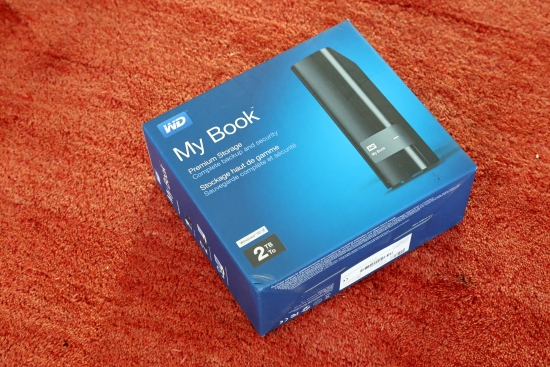
As the testing counterpart, I have a regular Western Digital My Book, formatted in NTFS, one of the drives I use to back up my music library. Interestingly, while the WD driver has to make do with a standard Windows drive icon, the Melco drive has a beautifully detailed icon that remains sharp even in its largest size.
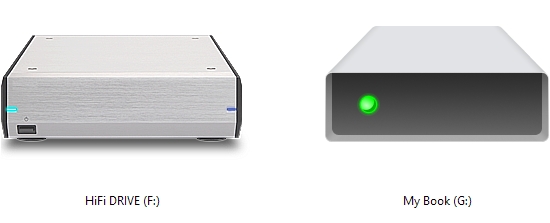
The Melco drive contains a spinning disk and is not 100% silent but significantly quieter than the WD drive. Notably, the Melco only emits a soft whirr from its drive, while the WD makes a louder spinning noise and also incurs a lower-frequency hum, which is amplified depending on the surface on which it stands.
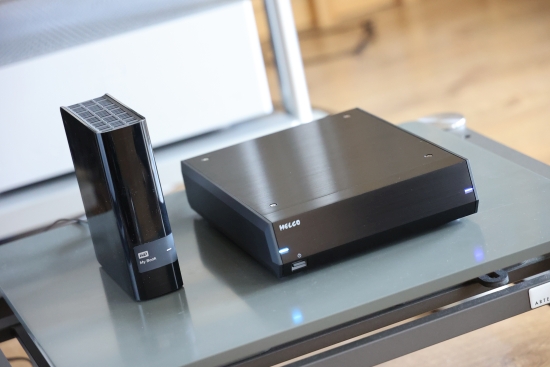
Review Context
Because the E100A H80 is compatible with a wide range of equipment, this review will investigate how it performs with the Antipodes Oladra, Grimm MU1, and Taiko Audio Extreme.
The drive will be tested in the main system, combined with the Aqua LinQ Network Interface, CH Precision L1 preamplifier, CH Precision A1.5 power amp, and Magico S1 MkII speakers.
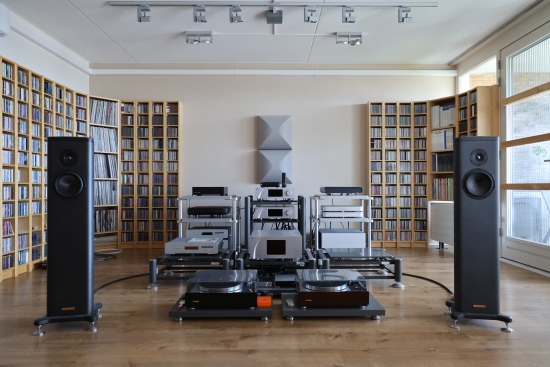
Listening
The Antipodes Oladra has three rear-mounted SATA HDD/SSD slots, meaning there is not a huge use case for connecting external USB storage. Nevertheless, it is possible, so I was interested in how this would impact the sound. Antipodes provides a comprehensive software suite and different methods of managing additional USB storage: linked and unlinked. When using the MinimServer (UPnP) software, drives can be linked via Antipodes’ File Manager, and after a MinimServer rescan, the drives are accessible just like local storage, and you can browse them in a folder structure. When using Roon, one can use the straightforward unlinked method, and extra storage can be mounted directly from within Roon’s storage settings.
The NTFS-formatted WD drive mounted without issues, but the exFAT-formatted Melco drive was initially not found. I tried reformatting and shrinking the drive but to no avail. During a remote session with Antipodes support, it was confirmed there is an incompatibility between the server’s file manager’s expectations and the way the Melco drive is structured. The matter is under investigation, but Antipodes support was kind enough to remotely mount the drive to facilitate the tests for this review.
Using the server’s Reclocker outputs, I started with the WD drive and tried MinimServer/MPD and Roon. These two solutions have inherently different sonic presentations but drive differences presented very similarly. Compared to the Oladra’s SATA-connected SSD, the external WD drive sounded rather dull, with indistinct muddy bass, softened leading edges, and reduced expression and PRaT. I can’t say it sounded genuinely unpleasant, but it reduced the server’s audiophile performance significantly.
Changing to the Melco drive had a much larger impact than I expected. Now, the difference between local and external storage had all but disappeared. Gone were the muddy bass and lack of articulation, and the sound was beautifully crisp and expressive again. It took several track-by-track comparisons before I could differentiate the differences. It’s almost of no consequence, but ultimately, the Melco drive provides a subtly tighter and crisper delivery. That may sound underwhelming, but considering the poorly-performing WD drive, this is a substantial achievement.
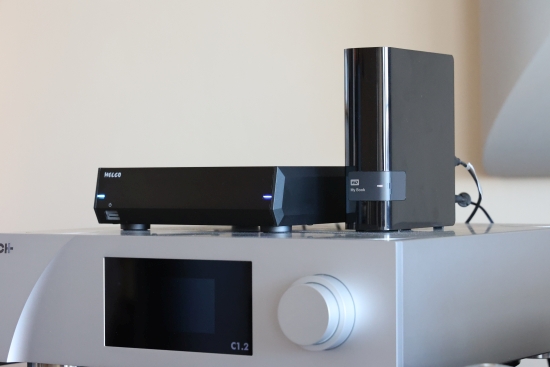
The Grimm MU1 runs Roon exclusively, and both drives could be mounted easily from within Roon. As with the Oladra, the external WD drive sounded less crisp and articulate than the internal drive, in this case, a SATA-connected SSD drive. However, the differences were much less pronounced this time, and I wondered if and why the Grimm could be less susceptible to such differences. But when switching to the Melco drive, the sound sure changed, surprisingly, becoming tighter and more controlled than the internal drive, leading to remarkably well-defined leading edges. Otherwise, the sonic signature remained very close, with no perceivable change in tonality or saturation. The distinction may not be huge with this server, but I would find it large enough to warrant the extra investment if additional USB storage was the desired solution.
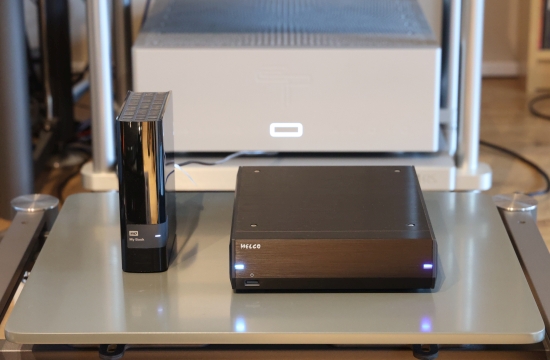
The Taiko Audio Extreme provides an interesting alternative because it uses Windows instead of Linux. Both external drives mount without issues, and the storage can easily be added from within Roon, just as with the Grimm. Unlike with that server, the differences between the drives were very pronounced using the Taiko server, with each of the two external drives sounding very different from the built-in Optane PCI drive.
The WD drive provided a fluid but blurry and imprecise delivery compared to the built-in storage solution. Leading edges were indistinct, and softer sounds were masked, leading to a homogenized sound. Switching to the Melco, the sound immediately jumped into focus, and the delivery became significantly tighter and more precise, with crisp leading edges and excellent pitch definition.
The built-in storage presented a third variant between the two USB drives: just as fluid but considerably cleaner and more precise than the WD drive, almost as articulate, incisive, and propulsive but tonally more saturated and organic than the Melco drive.
The Extreme server has been designed with an unusual storage solution and bespoke software, so it is no surprise that the internal drive provides the most balanced performance. Given this server’s optimization for internal storage, neither the WD drive nor the Melco is the perfect solution for expanding storage. Nevertheless, the advantages of the Melco drive are abundantly clear.
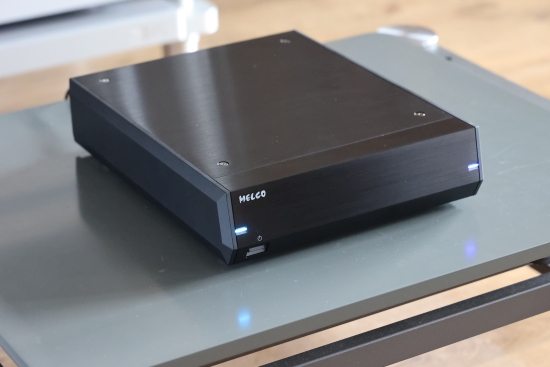
Conclusion
In general, the differences between external drives are related to precision, and the Melco E100A H80 consistently delivers the clearest and most well-defined performance. In certain cases, the drives can also impact the tonal quality, where the Melco may seem a bit leaner in comparison, but other sound aspects, such as soundstaging and dynamics, remain unaffected. Based on my tests, the Melco consistently outperforms a standard external USB drive by a significant margin. While the E100A H80 is more expensive than a standard USB drive, it operates more quietly, has a sleek and elegant appearance, and offers significantly superior sound quality. For high-end servers, I highly recommend the Melco.







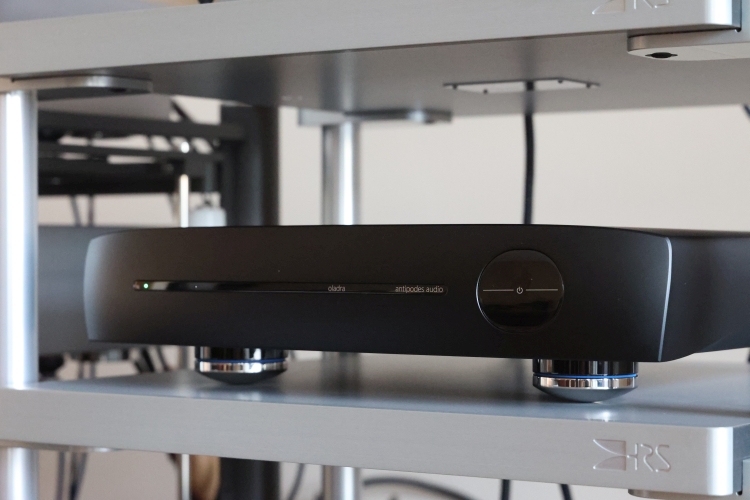
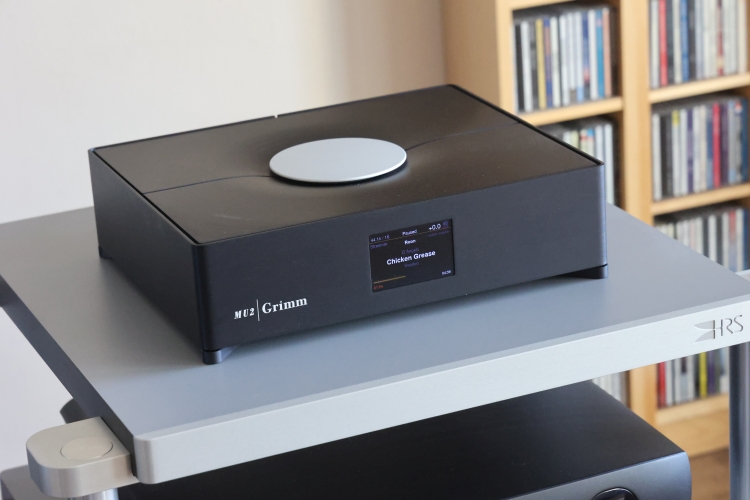
Hi Christiaan,
I was really looking forward to reading this, especially since I’ve been experimenting with different storage options myself. I’d like to share some additional insights on music storage.
As you noted, the Extreme has top-tier Optane cards as storage, paired with its excellent PSU—a combination that’s hard to beat. The Antipodes Oladra also benefits from outstanding power, supporting the optional recommended by Antipodes Samsung PM893 music drives. The operating system already is installed that same Samsung SSD. Interestingly, JCAT has also chosen a PM893 SSD for audio storage in their latest top-tier XACT X1 server. For reference, an 8TB PM893 typically costs just over 1,000 euros.
However, it’s possible that the SSD used for music storage in the Oladra was not choosen for achieving the highest sound quality, which is something worth verifying. I would also assume that the SSD in the Grimm isn’t of better quality for audio files either. This suggests there is potential for improvement, possibly creating a more noticeable difference compared to the Melco USB drive, specifically for the former.
As you pointed out, the Melco would likely experience a substantial improvement in sound quality with a better power supply unit, as high-quality power alfeady greatly enhances the performance of the servers discussed here. Given your recent sound quality boost from integrating a switch and clock into your network, imagine if the next Melco storage solution could be accessed via Ethernet!
By the way, have you considered experimenting with footers for storage devices? I think that could yield interesting results!
Always a plesure coming back here.
Cheers!
Paul
Hi Paul, great points, thanks for sharing. Given what the Extreme achieves with its internal storage it would not surprise me if there were also differences among SSD drives, but I have not yet given that any consideration. I’m sure the SSD The Oladra uses M.2 storage for system software, and the user is free to mount any SSD from the rear for music storage. What I use is what came with the K50 originally, a Crucial MX500. It’s possible this was fitted by the dealer, not the manufacturer. The Grimm has two internal SSDs, a Kingston SA400S37120G for the system software, and a standard Samsung 860EVO for music. When connected to a UPnP server, Melco or otherwise, I would think the Melco drive should be accessible to other UPnP components via the network, but I have not tried this. I’ve not experimented with footers under the drive, but I would not be surprised if that would be audible.
Hi Christiaan,
To clarify, the M.2 in the Oladra is dedicated to running the OS for the player board, while the pre-installed 480GB SSD handles the server board’s tasks (not intended for music storage). Indeed users can mount up to three SSDs for music files and for top performance, Antipodes recommends the Samsung PM893, which many users report makes a noticeable difference in sound quality after switching to it.
It seems that SQ differences between SSD and HDD aren’t always given the attention they deserve, but both Antipodes and JCAT emphasize their importance. I also find Melco’s choice to use HDDs, along with their approach to isolation, mounting, and shielding within the case, quite interesting for achieving good results.
Ah yes, you are right. I have made inside photos and just checked, and indeed, I forgot there is also an SSD inside the Oladra. I found that SSDs and HHDs can indeed sound quite different, and agree it is worth paying attention to, as well as to the precise type of storage. This is also a factor in what distinguishes the Melco drive from a standard WD drive.
….and the Melco N5 with HDD vs. the Melco N1 with a SSD of 3.84TB & separately powered, I unfortunately don’t know the exact origin of the SSD. By the way, thanks for confirming the interior photos of the Oladra. Here, my Antipodes K30 G4 (2024 upgrade) has two PM893 SSDs—one for the player OS and one for the server board OS.
This brings me back to the original topic of music file storage: I find it fascinating that manufacturers are still developing audiophile USB storage solutions, suggesting that many audiophiles are not quite ready to let go of their music files. Even though streaming sources can now match the sound quality of local libraries, this discussion here centers around local files. It seems though that local sources from the streamer can sound better than audiophile USB storage and will be preferred for critical listening.
Indeed, I am a frequent user of streaming via Qobuz and find that, while not 100% identidal to local music, it sounds so very good that I have absolutely no issues with it and can enjoy it on the same level as local music. Nevertheless, I absolutely treasure my local library for SQ and other reasons, so much that I have it backed up multiple times, with hard drives at friends’ places.
I wanted to highlight the potential benefits of using a specific type of SSD for users who prioritize sound quality when playing locally stored files. While some might prefer streamed files to match or even surpass local SSD storage quality, this brings up important questions about evaluating the sound quality of files played from above Melco device connected via USB to a streamer. In my opinion, sound quality is highest when using local storage on the server or when streaming from that server, with Melco playback ranking lower. At it’s pricepoint, the Melco seems hard to justify if used solely for backup, as it doesn’t appear to offer additional benefits in this scenario.
Perhaps pairing the E100-A with a high-end device like the Melco NH5-50 over USB, while using UPnP, could achieve a synergy that allows files on the E100-A to sound nearly on par with those streamed or locally stored on a Melco server. However, I don’t believe your conclusion fully reflected this idea. While it might be one of the best-sounding USB storage options, external drives generally remain a step below both local drives and streaming for sound quality.
Hi Paul, alas, I have not tried the Melco E100A drive with a Melco server, so I do not know how its performance compares to that of a built-in drive. While this drive can be used for backup, I’m not suggesting purchasing it solely for that purpose.
An “audiophile-grade 3.5-inch hard disk drive” for just 10x the price of a standard one? “Gone were the muddy bass and lack of articulation, and the sound was beautifully crisp and expressive again”. Some people simply deserve to be taken advantage of…